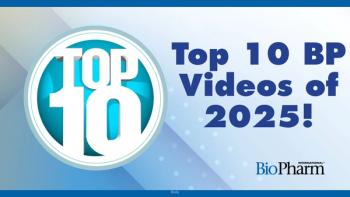
New FDA Guidance Documents Seek to Limit Scope of Compounding
The agency says that the routine large-scale compounding of drugs that are exact copies of existing medications undermines the the drug approval process.
Drugs that are manufactured at large scale are typically limited to a particular dosage or formulation, and sometimes these parameters do not suit all the needs of the patients who are candidates for treatment with that drug. For patients who are allergic to a component in an FDA-approved medication, for those with swallowing issues, or for those who need a higher or lower dose than what is currently available, compounded forms of an FDA-approved medication are often necessary. FDA
Although compounding has been tapped by large insurers and pharmacy benefit managers as a method to stem drug costs-these stakeholders say compounding could offer an alternative to source drugs that hold a monopoly price in the market-FDA says simply copying the formulation of branded drugs that are already on the market and approved by the agency undermines the drug-approval process. The agency says that exact copies are risky because they have not been evaluated under FDA’s standards for safety, efficacy, and quality. FDA points out that compounders are not required to comply with current good manufacturing practice requirements, and the use of compounding services for “inordinate amounts” of commercially available drugs is inappropriate.
FDA attests that generic-drug sponsors may be less motivated to manufacture generic versions of drugs if they can be readily copied in bulk without having to submit an abbreviated new drug approval (ANDA) application to FDA. Drugs that are produced in substandard manufacturing conditions, are not adequately labeled, or are produced outside of monograph standards are not as safe as commercially available forms, says the agency. However, drugs that are in short supply or have been discontinued may still be produced by compounding facilities when necessary.
A drug copy is defined as one that has the same API, excipients, dosage form and strength, and route of administration as a drug that is already on the market. A small change in dosage may sometimes still be considered a copy of an existing drug, as the change may not have a significant clinical impact on the patient. FDA considers oral medications that are within 10% of the strength of the originator as essentially a copy, unless the change has a significant clinical impact. All changes to a drug’s formulation have to be clearly documented and labeled, says FDA. For purposes of having office stock of a compounded drug, physicians must write a statement explaining the formulation change and why stock of a product in that form is necessary.
The goal of the guidance documents is to dissuade the large-scale manufacturing in compounding labs of versions of FDA-approved drugs and prevent health disasters, such as what occurred in 2012 when the bulk production of a preservative-free methylprednisone acetate at the New England Compounding Center (NECC) spurred a fungal meningitis outbreak. Although compounding represents a small portion of the prescription market (1–3% in the United States), according to the International Academy of Compounding Pharmacists (IACP), it still accounts for $300 billion overall. IACP says that 100% of hospitals have compounding pharmacies.
Considering market competition and “commercial availability” for a drug
When does reduced access mimic an actual drug shortage? Artificial shortages can occur when sole-source generic companies raise drug prices too high. Turing Pharmaceutical recently raised the cost of pyrimethamine (Daraprim), a 62-year old treatment for toxoplasmosis, by more than 5000%, from $13 to $750 per tablet. Although the drug was technically not considered a drug in shortage, the price of the medication and its narrow distribution channels made it difficult for hospitals to acquire. In response, Imprimis Pharmaceuticals, a compounding pharmacy, said it could make a copy of the drug for approximately $1 a tablet-a strategy that was embraced by a prominent pharmacy benefit manager. Although drug shortages are fair game for the manufacture of replicas, Daraprim was not technically on FDA’s drug shortage list. FDA wrote in the newest guidance that factors such as lower price “are not sufficient to establish that the compounded drug product is not essentially a copy of the commercially available drug product.” Thus, it does not appear that FDA would account for monopolistic conditions and consider permitting the compounding of a drug if the commercially available version were cost prohibitive.
FDA did make an exception to this rule in 2012 when it allowed compounded versions of Makena (hydroxyprogesterone caproate) to continue to be sold after K-V Pharmaceutical’s version of the drug was deemed too expensive and was made available only through CuraScript (now known as Accredo, which is a CVS company). The agency waived enforcement against compounding pharmacies to support access to the drug in what
Sources:
Newsletter
Stay at the forefront of biopharmaceutical innovation—subscribe to BioPharm International for expert insights on drug development, manufacturing, compliance, and more.




